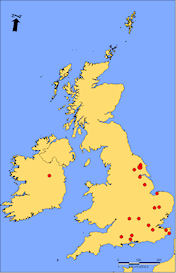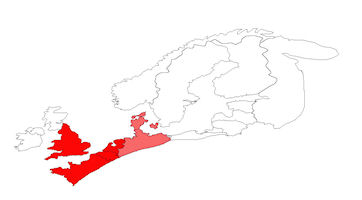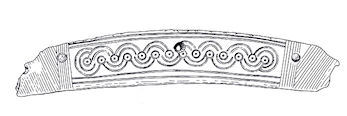
|  |
 |
 [Legend] |
 |

|  |
 |
 [Legend] |
 |
Type 2b combs are frequently well constructed and finely ornamented. Their connecting plates usually have a concavo-convex profile, while endplates are conspicuously large, often being described as 'flared' or 'winged', and may feature complex, even zoomorphic profiling. The class dates broadly to the 7th and 8th centuries, though some examples do seem to persist into Viking-Age levels (see MacGregor 1985, 87). Combs of Type 2b are frequently referred to as 'hogback' or 'winged' combs. It should be stated that certain Viking-Age combs with connecting plates of plano-convex profile have occasionally been described as 'hogbacked' (see Type 5); this definition is not applied here, and the ambiguity it has the potential to engender provides further justification to use a numerical system instead, and the term 'bowed'.
The comments facility has now been turned off.
© Internet Archaeology/Author(s)
University of York legal statements | Terms and Conditions
| File last updated: Tue Sep 20 2011